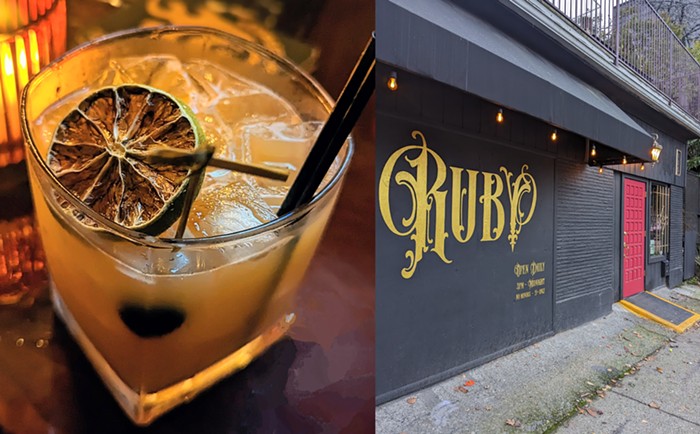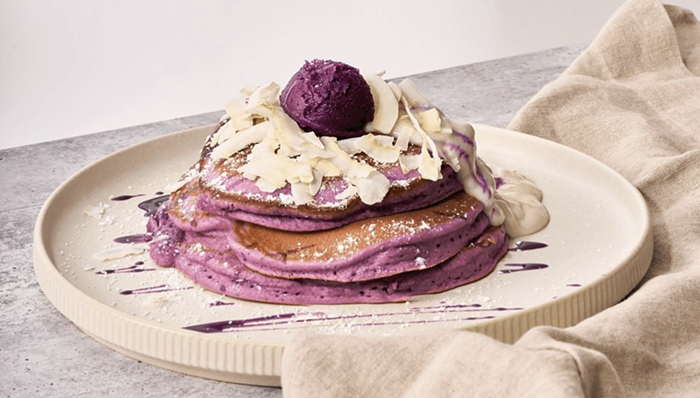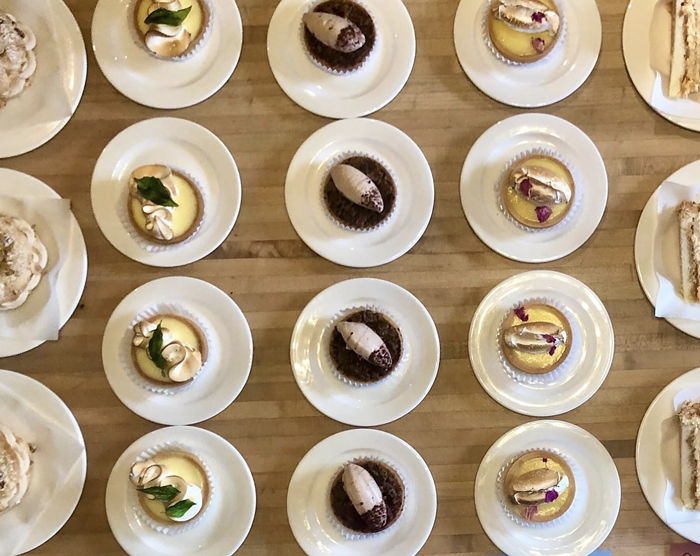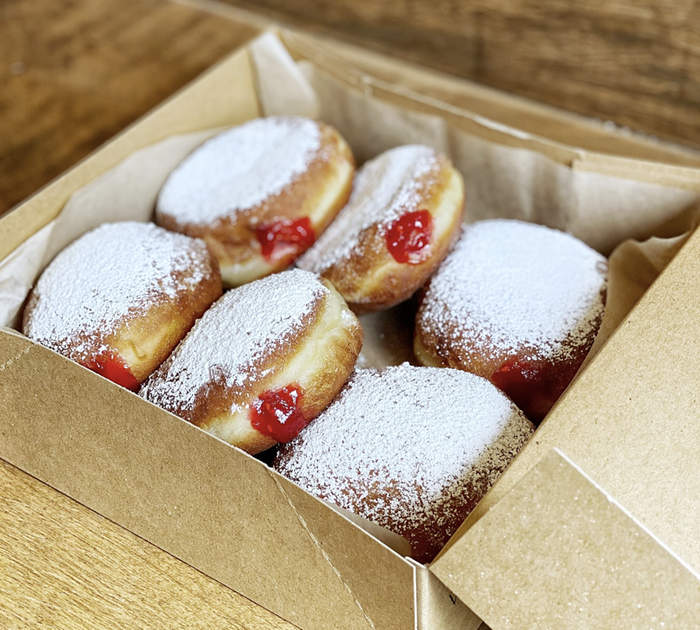
Glenda Downs comes to us bearing a message from the antediluvian past: Do as the ancients did and relax, put your feet up, and have a sweet intoxicating drink.
Glenda’s part of the team at Sky River Mead, a delightful meadery outside Seattle where the hard work of honey is converted into the tasty beverage enjoyed since at least 7000 BC in China—enjoyed by Aristotle and Pliny the Elder, by ancient Egyptians, by the Irish, by Mayans, by Vikings, and now by you. Take a little bit of honey, some yeast, a bit of patience, and there you have a refreshing golden beverage.
“I like the variety,” Glenda says. “The sky’s the limit with what you can do with it. There’s nobody telling you what you can do.”
And Sky River takes full advantage of that freedom, with varieties of mead, ranging from Marple-esque chamomile and lavender blends to a more beery hopped variety to zingy ginger transfusion. It’s a tricky science, creating the perfect drink, and depends on some factors outside anyone’s control — most notably whatever the bees feel like doing.

“If the bees were foraging on straight milkweed, you’ll have a dark barnyardy honey,” Glenda says. “Versus alfalfa fields, it’ll probably be lighter.” Water availability (or, as has been the case in the last few years, lack thereof) has an impact as well.
And there’s another organism with input into the creative process: Yeast, and a very different kind than one might find in other booze. Because honey lacks the nutrients of fruit-based drinks like wine, Glenda says, the biggest challenge for mead-makers (also known as mazers) is keeping the colonies of microscopic organisms happy so they will reward us with their excretions. Sky River’s resident expert has cultivated a yeast blend over the last two decades, honing the culture to proprietary perfection.
Although climate change has impacted any agricultural product, the pandemic has had relatively little effect — and why would it, on a technique that’s endured for nearly ten thousand years? “It hasn’t changed the process,” Glenda says, but “it’s had a huge impact on the tasting room.” They’ve had to move their tastings out-of-doors onto a lawn and into a garden, with contented sippers sampling their drinks from safe distances.
And while Sky River will have beverages available at the upcoming Cider Swig in Gig Harbor (and at Skal in Ballard and Total Wine in Seattle), they’ve had to cancel all of their events for the rest of the year. But everyone’s increased indoor-time has also provided more opportunities to experiment with new blends and innovative ingredients. Glenda recommends that home brewers looking to expand their repertoire check out the book The Compleat Meadmaker, by Ken Schramm, and also to “start small, because honey is expensive.”
Personally, I’m curious about what a horseradish mead might taste like; but Glenda’s interests are more historical. Her dream is to figure out the mead recipes of Queen Elizabeth.
“There’s a lot of folklore about it,” Glenda says. “She had a meadmaker on staff, and lots of references to heather and garden herbs. … You’ll see, like, ‘aged rainwater’ in old recipes.” She laughed. “I haven’t figured that one out.”



















